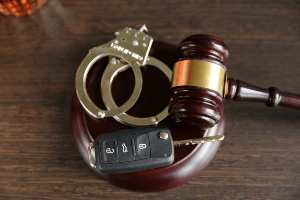How May Negligence Per Se Be Used in a Personal Injury Case?
Posted on behalf of James Lynch on July 7, 2022 in Personal Injury News. Updated on May 25, 2023
 If someone breaks the law and causes you harm, that person could be held financially liable for your damages. In legal terms, the party would be guilty of negligence per se.
If someone breaks the law and causes you harm, that person could be held financially liable for your damages. In legal terms, the party would be guilty of negligence per se.
Below, we discuss the role of negligence per se in injury cases and how you may be able to prove it.
Let our experienced personal injury lawyers in New Jersey help you prove negligence per se directly resulted in your injuries. We are prepared to help hold negligent party’s accountable and to recover maximum compensation on your behalf.
UNDERSTANDING NEGLIGENCE PER SE
Negligence per se occurs when one party violates a public safety law, and someone sustains injuries as a result.
The elements of a negligence per se case are as follows:
- The at-fault party breached a code, regulation, or statute
- Said code, statute, or regulation was meant to protect a certain type of individual
- Damages experienced were what the law intended to prevent
- Fines/other punishment exist to deter the harmful action
- The law explicitly establishes the type of conduct to avoid
In a case involving negligence per se, the injury victim must prove all these elements. Additionally, the victim must establish that he or she is the class of individual who was meant to be protected by the specific law that was violated.
Some common examples of a negligence per se case include victims suffering harm because another party broke the law by:
- Speeding
- Drunk driving
- Running a traffic light/sign
- Failing to alert the public to hazardous conditions
- Failure to meet safety regulations when manufacturing a product
- And more
HOW DOES NEGLIGENCE PER SE DIFFER FROM ORDINARY NEGLIGENCE?
The difference between negligence and negligence per se comes down to the elements of each legal theory. In cases of ordinary negligence, proving the at-fault party violated the duty of care falls to the victim. Whereas in a negligence per se case, the breach is automatically proven once it is established that the at-fault party broke the law.
In ordinary negligence, the duty of care owed to someone is to act in a reasonable manner to prevent causing harm. This could mean that under a certain circumstance the at-fault party acted reasonably and therefore did not breach his or her duty to another party.
For example, an accident that occurs due to an unforeseen emergency where one driver must slam on the brakes, causing another vehicle to slam into his or her vehicle. The first driver who slammed on the brakes could argue that he or she acted just as any other reasonable person would in a similar situation.
If, however, the first driver in this scenario had been texting and driving (which is against the law in New Jersey), then he or she might be guilty of negligence per se.
HOW DO I PROVE NEGLIGENCE PER SE?
Proving negligence per se requires an injury victim to prove each element. Meaning you must prove a law that was meant to protect you from harm was violated by another party due to his or her actions.
Generally, proving someone violated the law is simple, as they are clearly defined and easily referenced. It might be more challenging if the at-fault party denies committing any violation, however. Such as a driver who denies texting and driving or speeding at the time of a crash. You might be able to prove what happened with a police report, witness testimony and other evidence to back up your claim.
Next, you must prove you are part of the class of individuals the violated law was meant to protect. For example, traffic laws are meant to protect drivers, passengers, pedestrians, cyclists and anyone else who shares the road. For non-motor vehicle related accidents, such as a slip and fall, you might need to prove you had the right to be on the property when you were injured.
DO I STILL HAVE TO PROVE CAUSATION?
Yes, to successfully recover compensation in a negligence per se case you must establish a direct link between the accident and your injuries. A party cannot be held liable for damages he or she did not directly cause.
ARE THERE LIMITS TO NEGLIGENCE PER SE CASES?
Yes, there are limits because negligence per se only applies in situations where a protected class is injured due to the violation of a specific law.
An example of when negligence per se may not apply is when a person trespasses into the yard of a private home where there are potential hazards. In this scenario, the owner of the property did not have a legal requirement to warn trespassers of the dangers.
CALL AN EXPERIENCED ATTORNEY
Whether an incident involving negligence per se or ordinary negligence resulted in your injuries, you have the legal right to pursue compensation. Let our experienced attorneys handle the complex legal process for you.
We offer a free consultation to discuss your claim and charge you nothing up front.
Call (800) 518-0508 today.







